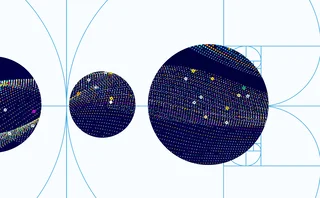
Carbon-trading log ready by November
The Kyoto Protocol’s international carbon-trading market is set for expansion, with the introduction of a worldwide transaction log by the end of the year. The International Transaction Log (ITL) will link the carbon registries for each Kyoto nation through an online network.
“The ITL will create a controlled environment for worldwide carbon trading. It is at the heart of how certified emission reductions (CERs) will be brought into the ETS system from January 2008,” said Paul Newman, managing director at London-based energy broker ICAP Energy.
The ITL will allow industrialised, or 'Annex 1', nations under the Kyoto Protocol to trade assigned amount units (AAU), which are the Kyoto equivalent to Europe’s EU emission allowances. There are expected to be around 56 billion tonnes of AAU in the ITL system over the Kyoto Protocol’s five-year period from 2008 to 2012.
“With such quantities of emission allowances in the Kyoto system, recording their whereabouts at all times is crucial to the integrity of the Protocol,” said Yvo de Boer, executive secretary for the Bonn-based UN Framework Convention on Climate Change.
The ITL will become fully functional once national registries have established operational links with the ITL. All registries must pass an official set of tests to ensure they meet the necessary standards before they can operate. So far, eight registries have been approved to operate with the ITL. They are the registry of the Clean Development Mechanism and those of Austria, the Czech Republic, Hungary, Japan, New Zealand, Switzerland and the UK. A further seven European registries have passed the technical tests and are finalising their documentation. Registries are scheduled to have all completed their ITL approval processes by mid-October 2007.
“The functioning of the ITL would give an enormous boost in confidence to the carbon market, especially with companies that take a more careful approach to entering the market, as they might not have the mandate to trade if there is no robust delivery mechanism in place,” said Sara Stahl, head of business development and marketing in London at the Amsterdam-based European Climate Exchange.
The ITL could change the way that CERs are traded because it will provide spot prices for CERs. “At the moment you can only trade CERs on a forward basis. When the ITL is operational, a spot market will develop as well,” says Stahl.
Under the 1997 Kyoto Protocol, 36 industrialised countries are required to reduce greenhouse gas emissions by at least 5% below 1990 levels between 2008 and 2012. A total of 175 countries have now ratified the treaty, which entered into force in February 2005. As for the future of the ITL and the carbon-trading market, “this may even lead to a further phase after the Kyoto Protocol treaty ends in 2012,” says Newman.
See also: ABN Amro launches climate change index
Beijing to host first carbon credits exchange in developing world
Isda publishes emissions annexe
An environmental concern
Only users who have a paid subscription or are part of a corporate subscription are able to print or copy content.
To access these options, along with all other subscription benefits, please contact info@risk.net or view our subscription options here: http://subscriptions.risk.net/subscribe
You are currently unable to print this content. Please contact info@risk.net to find out more.
You are currently unable to copy this content. Please contact info@risk.net to find out more.
Copyright Infopro Digital Limited. All rights reserved.
As outlined in our terms and conditions, https://www.infopro-digital.com/terms-and-conditions/subscriptions/ (point 2.4), printing is limited to a single copy.
If you would like to purchase additional rights please email info@risk.net
Copyright Infopro Digital Limited. All rights reserved.
You may share this content using our article tools. As outlined in our terms and conditions, https://www.infopro-digital.com/terms-and-conditions/subscriptions/ (clause 2.4), an Authorised User may only make one copy of the materials for their own personal use. You must also comply with the restrictions in clause 2.5.
If you would like to purchase additional rights please email info@risk.net
More on Energy
ETRM systems 2024: market update and vendor landscape
This Chartis report evaluates energy trading and risk management systems that provide front-to-back, asset class-specific and geography-specific coverage, and considers the full energy trade lifecycle
CTRM systems 2024: market update and vendor landscape
A Chartis report on commodity trading and risk management systems that considers its different applications and addresses the market and vendor dynamics to determine the long-term and structural impacts of the overarching market evolution on the…
Energy Risk Commodity Rankings 2024: markets buffeted by geopolitics and economic woes
Winners of the 2024 Commodity Rankings steeled clients to navigate competing forces
Chartis Energy50
The latest iteration of Chartis’ Energy50 ranking
Energy trade surveillance solutions 2023: market and vendor landscape
The market for energy trading surveillance solutions, though small, is expanding as specialist vendors emerge, catering to diverse geographies and market specifics. These vendors, which originate from various sectors, contribute further to the market’s…
Achieving net zero with carbon offsets: best practices and what to avoid
A survey by Risk.net and ION Commodities found that firms are wary of using carbon offsets in their net-zero strategies. While this is understandable, given the reputational risk of many offset projects, it is likely to be extremely difficult and more…
Chartis Energy50 2023
The latest iteration of Chartis' Energy50 2023 ranking and report considers the key issues in today’s energy space, and assesses the vendors operating within it
ION Commodities: spotlight on risk management trends
Energy Risk Software Rankings and awards winner’s interview: ION Commodities







